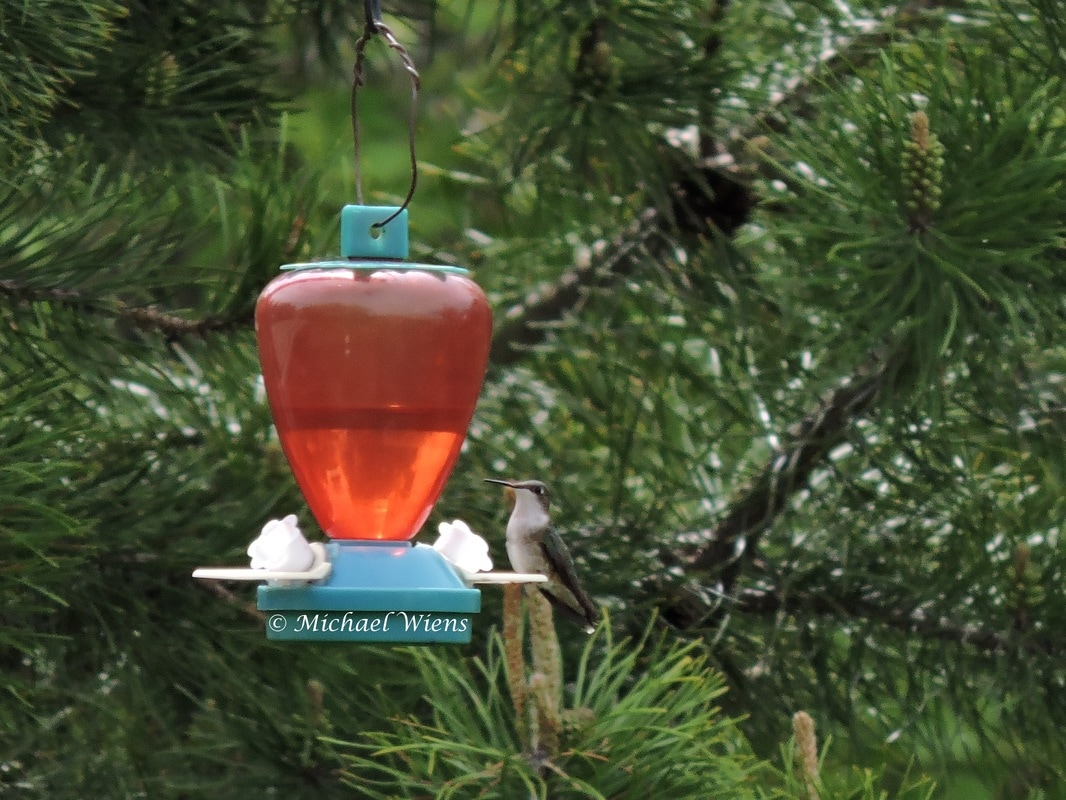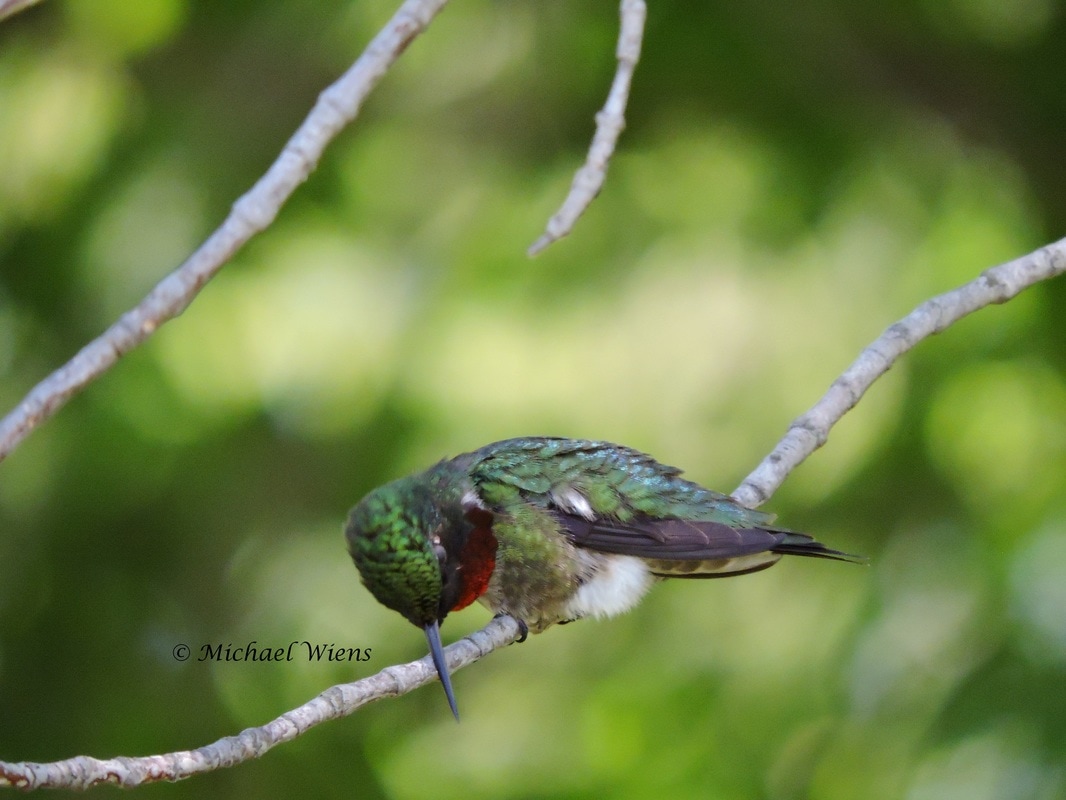Humming Blog |
 This is the time of year when so many "hummingbirders" are concerned about the birds they saw earlier in Spring. They see few to no birds over lengthy times. Many pull down their feeders, and many have asked me if they should do so. There is a clear and definite answer to this. DO NOT pull down your feeders. In Spring when they first arrive, they're looking for food sources primarily for one reason. They want to know that there'll be food for them and their young throughout the entire nesting season, and when they'll bring the young from the nest. Sure, the sightings are much higher when they first arrive, but things change dramatically. If you have a dominant male, he will continue to stick around or show up frequently, depending on the size of his territory, but the females have a different role that doesn't allow them as much freedom. You may have a female nesting very near your garden, and you may have them nesting a mile or more away. This is the biggest variable that will dictate how frequently the females will show up. If she nests within a quarter mile of your place, she'll probably show up 2 or 3 times an hour to feed. If she nests half a mile a way, she may show up a few times a day. If she nest over a mile away, she may appear once a day to once every few days, or even once a week. With these few sightings, it's almost a guarantee you will not see every visit, especially if you look out at your feeders a few times a day with the slightest odds of seeing her 30 second visit. Hummingbirds are very similar to other birds in the fact that they feed in close proximity to their nest. It would be counter productive to gather food 2 miles away, while consuming half to most of it in their travels to and from the nest. Hummingbird food(nectar) can be hard to find in large quantities, so when they know of a source, they'll remember it, and highly rely on it. That's why this is NO time to pull down feeders, thinking they're gone. They may only show up once a week, and guaranteed most people probably miss at least 90 percent of their visits, but they will still seek out and rely on these food sources up to and when the young leave the nest. If you decide to pull down your feeders, you will completely undo all the progress achieved first thing in Spring. I can promise you, if you've had a female hanging around in Spring for a day or more, the probability that she'll be back with her young later in the season is extremely high. For those living in a region that has a second and even a third brood, this cycle simply repeats itself, but with a larger number of sightings in between because of the population increase. Female Ruby-throated hummingbird, N.E. of Edmonton, Alberta, Canada. Late May 2017.
5 Comments
 8 months in a bird's life and lots can change. I waited for Ziggy's return and it appeared like his legacy was over. A more docile male appeared and stuck to one side of the garden. His characteristics seemed quite different from his predecessor. As time went on, little bits of Ziggy's personality started to appear in the current male. He shifted his territory from one side of the yard to eventually controlling the entire garden. I started to see this crazy flight pattern appearing as he gave me more opportunities to see him in the entire yard. It was the same bird from early on in Spring, but after 8 months away and a change in tree and yard structures, these variables must have forced a few changes in his behavior. I couldn't believe it. "Ziggy, could it be you?" The strangest perches were being used again, and not just one of them but all of them. It's like he slowly started remembering things from the past, and I started recognizing his little quirks as well. A number of males still kept showing up but with extreme caution, and they were often times met with a surprise blitz attack from stealth jet Ziggy. I saw very few similarities to start with, but after the last week of watching his behavior, I am nearly one hundred percent convinced it's Ziggy. I wouldn't have believed it early on but there are far too many similarities to not believe that Ziggy lives on. Adult Male Ruby-throat. N.E. of Edmonton, Alberta. June 2017 |
Archives
June 2024
Categories
All
|
 RSS Feed
RSS Feed
